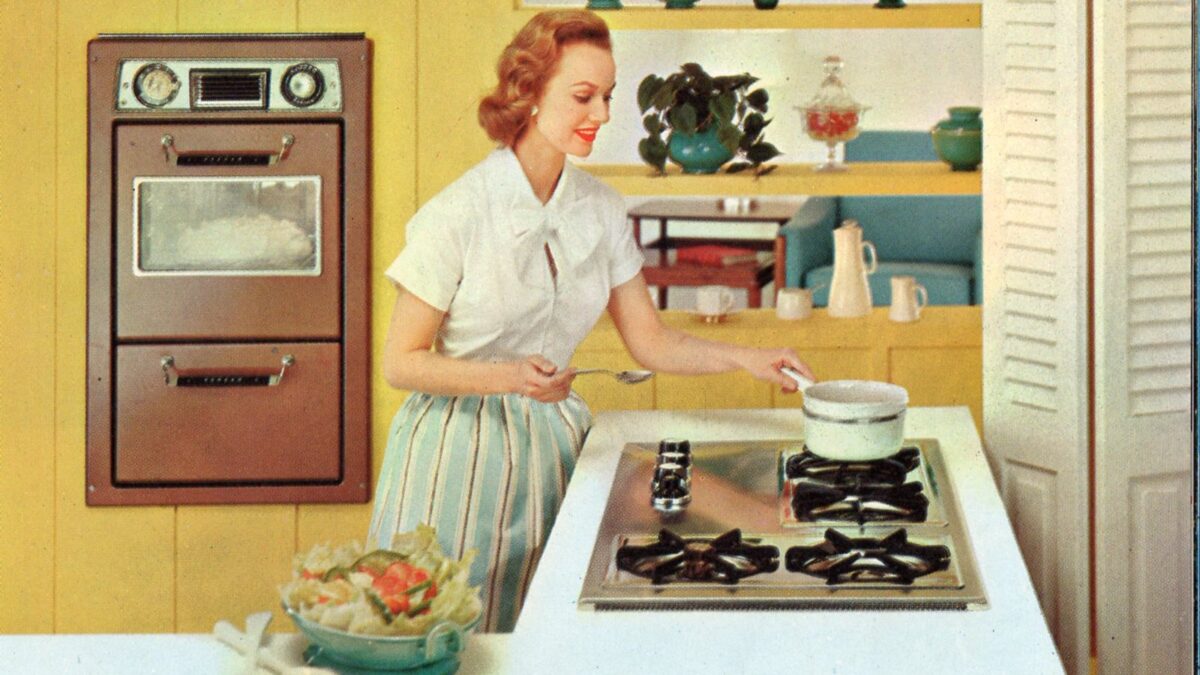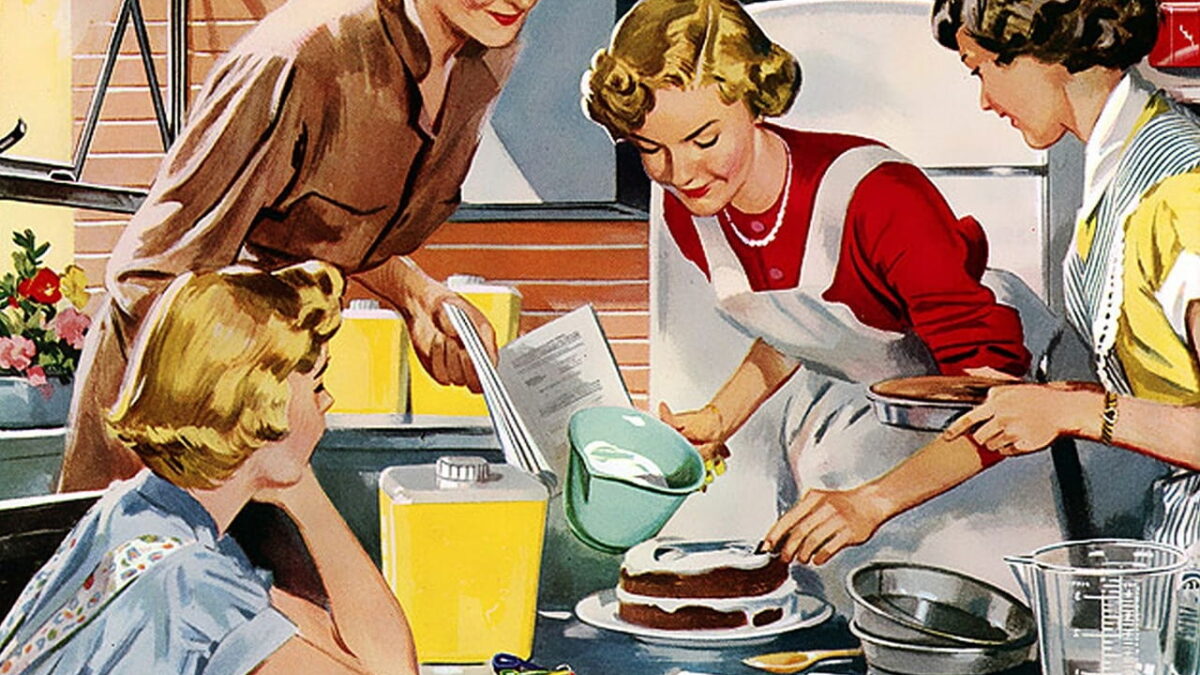When Blake Masters, the Republican nominee for Arizona’s U.S. Senate seat, declared that Americans “ought to be able to raise a family on one single income,” he turned a few heads. “Most families,” he added, “would prefer to have one breadwinner and one parent stay at home with the kids,” a phrase that strongly invokes the image of traditional gender roles in the minds of most listeners.
While it might be tempting to dismiss this as nothing more than misguided nostalgia for the 1950s, Masters’ popularity suggests these concerns strike a chord with Americans — many of whom are calling for a return to traditional gender roles — a surprising development in the supposedly progressive political landscape of the 21st century.
While it’s easy for critics of Masters to condemn him and his constituents as backward, misogynist, neo-fascist, and what have you, these criticisms fail to take seriously an important reality: the increasing unhappiness of women in modern life.
Objective data for this predicament began to surface in 2009, when Betsey Stevenson and Justin Wolfers published a study titled, “The Paradox of Declining Female Happiness.” In it, these University of Pennsylvania researchers presented compelling data indicating that women’s sense of happiness has been declining in industrialized countries for the last 35 years, a conclusion shared by six other major studies across 35 developed countries totaling more than 1.3 million participants.
For comparison, the 1970s saw women as a group reporting a higher sense of happiness than men. But in the last three decades, that sense of well-being has steadily declined, both in absolute terms and relative to male happiness.
This drop in happiness is still present when other factors are controlled for: with children or without, married or unmarried, single or divorced, young or old, across all ethnicities, job types, and income levels. Women are unhappy and they’re getting unhappier.
This data clashes with one of the basic narratives of the 21st century: women’s liberation. While it’s true that women today are more educated, have access to more opportunities, and enjoy more freedoms, happiness hasn’t followed. Quite the opposite. But why?
Some have suggested that women’s liberation simply hasn’t gone far enough, citing statistics that although men now do more housework than ever before, men still aren’t doing quite enough. Others have suggested that liberation is making women unhappy because being involved in the workforce has only made them more conscious of the gap between their privileges and those of men.
But the problem with these explanations is that they don’t make sense of the data. The data shows that the world has been steadily trending toward the equality (or outright superiority) of women. Hours spent on housework have progressively equalized. There has been a steady increase in the number of women in positions of power, from corporations to countries, and women now earn more college and graduate degrees than men. If these things were all good for women, we would expect some correlation between the steady progress of equality and women’s happiness. Instead, we see the opposite.
From a purely objective standpoint, the data says that increased gender equality correlates with female unhappiness.
How do we interpret this data?
First is the obvious question: Which women are happy? A number of studies suggest that married women in traditional gender roles tend to report a higher sense of fulfillment than those who aren’t and that women are happier working part-time rather than pursuing careers. Couples with traditional gender roles also appear to have more sex, according to several studies, while equalitarian relationships tend toward “roommate-like behavior” or a “‘sibling-like’ tonality to the relationship that undermines sexual desire.”
Why might this be the case? Book sales give us some indication. The last 20 years saw the debut of two fiction series that feature demure, passive females involved in romantic relationships with powerful, domineering males: “Twilight” by Stephenie Meyer and “Fifty Shades of Grey” by E.L. James.
You would think that such stories would be unappealing to the sensibilities of modern, liberated women and that their only appeal would be as male power fantasies. But men were neither the authors nor the primary readers of these books; women were. And the two series have respectively sold 160 and 150 million copies worldwide, making them the 16th and 20th best-selling series of all time.
The incredible success of these stories suggests that a fundamental asymmetry in romantic relationships (especially in terms of power) is what women find attractive. This conclusion is also supported by a prominent study of internet browsing habits, in which women’s pornographic fantasies were shown to revolve primarily around physically powerful or otherwise high-status men. No wonder egalitarian relationships result in less sex.
These psychological differences also explain the curious data on women in STEM fields. While popular opinion holds that the cause of female underrepresentation in STEM is due to socially constructed gender roles, the data suggests the opposite. The more egalitarian a culture is toward men and women, the fewer women choose careers in STEM. In the Scandinavian countries, which boast the highest vocational freedom for women, women more frequently choose traditionally female jobs. It’s only in countries with much less economic freedom that women are more likely to choose a STEM career, which suggests that most women go into STEM out of survival, not preference.
Many have acknowledged these statistical realities but view them as a problem to be solved. A recent article from the American Psychological Association — responding to the trend of women leaving the workforce during the Covid-19 pandemic — outlines a number of psychological tactics for keeping women in the workplace despite their tendency to prioritize their families over their careers.
“If we can understand their motivations,” another writer remarked, “then interventions can be designed to help them change their minds.” But creating strategies to change women’s minds instead of allowing them to freely choose suggests that those pushing for women’s liberation have ulterior motives.
This suggestion is nothing new. As Arthur Gordian has argued, feminism’s push to get women out of the home and into male jobs does many things at once: It doubles the labor force, creates more competition for jobs, drives down wages, creates a new demand for jobs to replace the jobs women used to do at home, and removes the competition that female-led cottage industries used to pose big business. All of these outcomes align with corporate interests — besides creating more income streams that the government can tax.
If this world of intensifying corporatization and wage-slavery was good for women we’d expect to see any amount of increase in female happiness, but we don’t.
And that makes sense. If women really are happier in traditional gender roles, if what they actually find attractive in men is power and status, and if they only choose traditional male jobs when forced by economic necessity, then the world feminism has created is exactly the opposite of one that can make them happy. The only paradox here is the irony of feminism’s inability — or unwillingness — to listen to the actual needs and desires of women.









